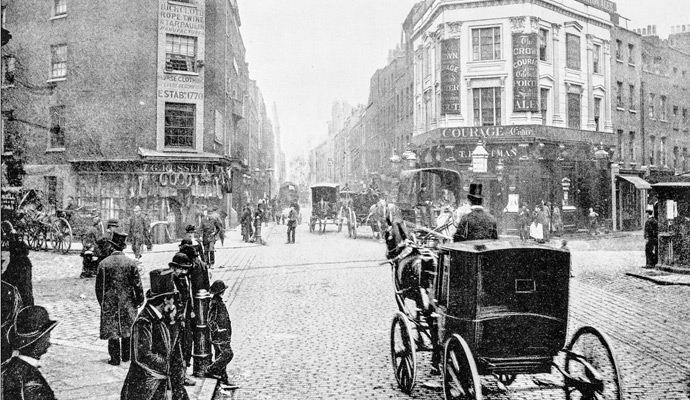The Practitioner’s Tale
A review of Doing Capitalism in the Innovation Economy: Markets, Speculation, and the State, by William H. Janeway.
Doing Capitalism in the Innovation Economy: Markets, Speculation, and the State
by William H. Janeway,
Cambridge University Press, 2012
After BEA Systems was quietly folded into Oracle during the financial crisis of 2008 for US$8.5 billion, around five times its annual revenues, the business middleware firm became a dim memory, even in the software industry. But in December 2000, when its shares hit an all-time high of $85, BEA had been a poster child for the dot-com bubble. In a series of perfectly timed sales of founder’s shares, Warburg Pincus, the Wall Street private equity firm that had assembled BEA from several Unix-based spare parts a few years before, made approximately $6.4 billion on a $54 million investment.
The venture capitalist behind the deal was William H. Janeway. And in his book Doing Capitalism in the Innovation Economy: Markets, Speculation, and the State, he tells the story of how he did it. That’s fascinating in itself, but more interesting still is how he explains the economics that permitted the feat.
Janeway is not just another successful businessman. The valedic-torian of his class at Princeton University, in 1965 he went off to Cambridge University as a Marshall Scholar. Janeway planned an academic career in economics, but his literary dissertation (on the economic policies of the U.K.’s Labor government of 1929–31) placed him on the sidelines of a discipline that “was then accelerating its transition to formal methods, mathematical models, and quantitative techniques.” So after earning his Ph.D., Janeway joined a small Wall Street firm instead. Forty years later, with Doing Capitalism, he has returned to his first love.
The first half of Janeway’s book is semiautobiographical, a vivid tour of the transformations that he witnessed following the deregulation on Wall Street after May Day 1975. This was when traditional investment banking, heavily influenced by the experience of the Great Depression and protected from competition, gave way to a period of pell-mell innovation that ultimately produced the financial crisis of 2008. It retraces Wall Street’s grad-ual discovery of the computer and the Internet, taking the reader to school on every deal, good and bad, until the story of BEA provides a thrilling climax—a $120 to $1 payout that is about as good as it gets in the venture capitalist’s world.
The second half of the book is a lucid meditation on the inevitability of financial bubbles and the large losses they entail. Over the years, Janeway spent his evenings reading Marx, Keynes, Schumpeter, and Fernand Braudel, a French histor-ian. He became a board colleague and friend of Hyman Minsky, the Levy Institute guru whose financial instability hypothesis motivated Charles P. Kindleberger to write Manias, Panics, and Crashes: A History of Financial Crises (Basic Books, 1978). Janeway also immersed himself in the history of technology, especially the work of Carlota Perez.
Out of this cauldron comes Janeway’s overarching argument, as reflected in the book’s subtitle, Markets, Speculation, and the State: Economic growth over the past 250 years is best understood as the product of a “three-player game.” In this game, the market economy and the state compete to direct the allocation of resources to new technologies—to canals and waterpower in one century, to steam and electricity in the next, and to computers after that. Financial capitalism, the third player, which includes bankers of every sort, exploits the discontinuities that inevitably arise from such focused investment. Then investors pile in, bubbles occur, crashes ensue, and a new economy is assembled, partly from the detritus of the binge. Thus, according to Janeway, bubbles are the necessary drivers of economic progress, and financiers are the nurturers of growth, providing not just capital but crucial know-how.
BEA is a perfect example of how Janeway’s three-player game unfolds. The U.S. Defense Department funded the basic research that brought the Internet into existence. AT&T built the key technology, the Unix computer operating system, but was unable to take advantage of its single most valuable asset once its monopoly was broken up. IBM, unwilling to cannibalize its proprietary products in order to enter the new world of open systems, retreated at a key moment. So Warburg Pincus and its managers were able to enter the fray, cobbling together a new company to meet a demand at just the right time and selling it to investors. Larry Ellison then picked up BEA after the bubble burst, and folded it into his company, Oracle.
This narrative may be the right way to think about the last 40 years, but Janeway acknowledges that the three-player game is not standard economics. That isn’t stopping him from predicting that the “low-carbon economy” will be the “next new economy.” Nor is it stopping him from seeking to inflate the bubble that new economy could create by positioning climate change as an external threat equal to Communism in the 20th century, and by suggesting that we turn energy policy into “the economic equivalent of war.” And so the three-player game begins again.![]()
Author profile:
- David Warsh is the proprietor of www.economic principals.com, an independent economics journalism site. He covered economics for the Boston Globe for 22 years and is a two-time winner of financial journalism’s Gerald Loeb Award.



